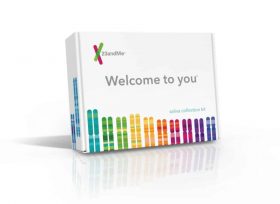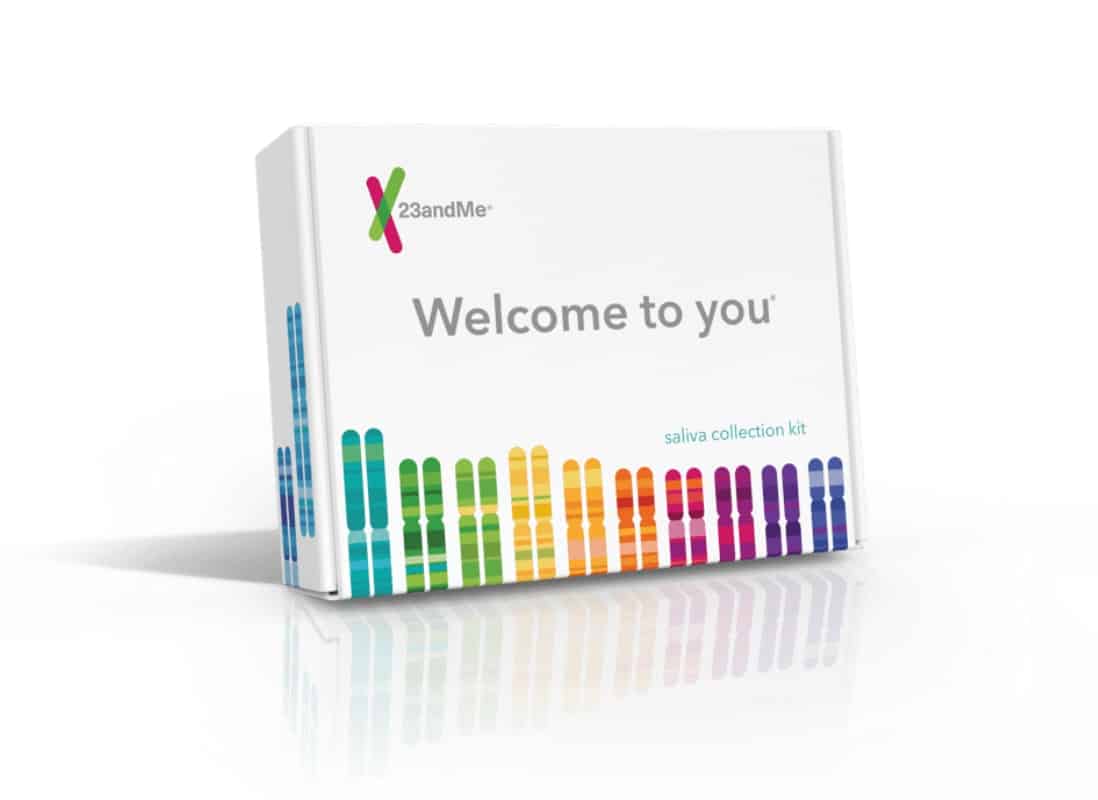
The Best DNA and Ancestry Products Compared
23andMe Guide
- UPDATED December 2025
Are you considering taking an at-home DNA test to learn more about your family history? Have you heard about 23andMe?
23andMe is a comprehensive DNA testing service that enables users to unravel the secrets of their DNA. The DNA testing service uses a small saliva sample to tell you about the origins of your ancestors, your genetic health risks, and much more.
While there are loads of DNA tests available, we’ll tell you what sets 23andME apart from the mix. What’s more, we’ll explain how 23andMe service works, as well as its pros and cons.
Read along to learn more!
Advertising Disclosure
Many or all of the companies featured provide compensation to us. These commissions are how we maintain our free service for consumers. Compensation, along with hours of in-depth research, determines where & how companies appear on our site.
PROS
- Provides fast, accurate, and detailed DNA test results
- Lets you know if your genes indicate you are at risk for certain genetic diseases
- Offers mtDNA and YDNA haplogroup testing at no additional cost
CONS
- While 23andMe allows you to connect with DNA relatives, it does not feature a family tree builder
- Focuses more on health than heritage
BOTTOM LINE
With 23andMe's DNA test, you can learn more about your ancestry as well as your potential for genetic health risks. The saliva test is painless and easy to use. Not to mention, you gain access to hundreds of reports and can even connect with DNA relatives.
What is a DNA test?
DNA, or deoxyribonucleic acid, is the genetic material that defines who we are as human beings. Lending to 23andMe’s name, each human has 23 identical pairs of these essential genetic markers. 23andMe utilizes a type of DNA testing called qualitative genotyping. Qualitative genotyping is used to determine the relevant variants in DNA. 23AndMe uses these variants to identify your genetic health risks, carrier statuses, and genetic makeup. 23andMe uses a small vile of saliva to interpret your autosomal DNA, YDNA, and mtDNA results. You inherit your autosomal DNA from both of your parents. As such, it is typically the most informative piece of evidence 23andMe gathers. Meanwhile, YDNA is only inherited through the paternal line. In other words, it is only passed from father to son. As such, it can only be tested in males.
FEATURED GENETICS EXPERT
DNA testing ties in with family history more than most of us think.

On the other hand, mtDNA is passed on through the maternal line. Therefore, it is found in both males and females.
As you can see, each type of DNA features a unique set of genetic information. Therefore, you get more accurate results when you pair them together. Keep in mind that genetic information gets diluted as it is passed down. For this reason, DNA testing is not the most accurate of tracing your genealogy.
How Does the Test Work?
To order a DNA test, you must visit the 23andMe website. Here, you must choose between 23andMe’s Health + Ancestry or basic Ancestry services. Keep in mind that you can always unlock the results of your health screening at a later date. You will not need to be retested. Although, the price will amount to more than the packaged deal.
A peak inside the 23andMe test kit.
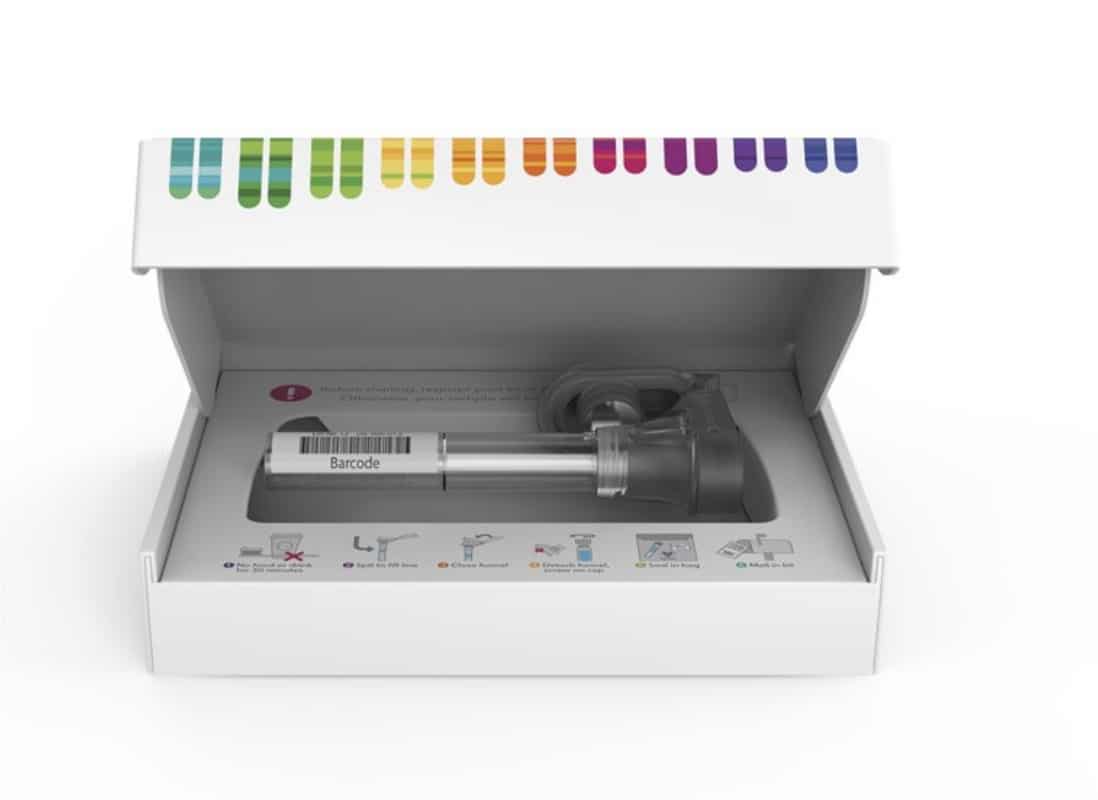
Once you have selected and paid for the test of your liking, 23andMe will ship it directly to you. Most tests arrive within 3 to 5 days. However, express shipping is available for an additional fee.
When you receive your test kit, you will find a plastic clamshell that holds a small saliva collection tube, a funnel, a specimen bag, and instructions. It is also important to save the folding cardboard box, as this is what you will use to ship the kit back to 23andMe. The box comes with a pre-labeled first-class shipping label to ensure its accurate delivery.
As the instructions state, you need to set up a 23andMe account to continue with the process. Keep in mind that you may have ordered your test without registering. Don’t fret! The process takes just a few minutes. You just need to enter some basic personal information, create a password, and establish a username.
Once you’ve registered, the site will prompt you to enter your “barcode.” They are referring to the barcode that is adhered to the side of the saliva collection tube. It is imperative that you enter this number correctly, as it is what allows 23andMe to connect you directly to your test results. Finally, you’ll be asked to agree to 23andMe terms and conditions and give consent to have your saliva tested.
While the saliva test is fairly straightforward, you may not eat, drink, chew gum, brush your teeth, or use mouthwash for at least 30 minutes prior to taking it. The saliva must be filled to the collection line and contain no bubbles. Once you’ve properly filled the vile, you must remove the funnel top and replace it with the tube cap.
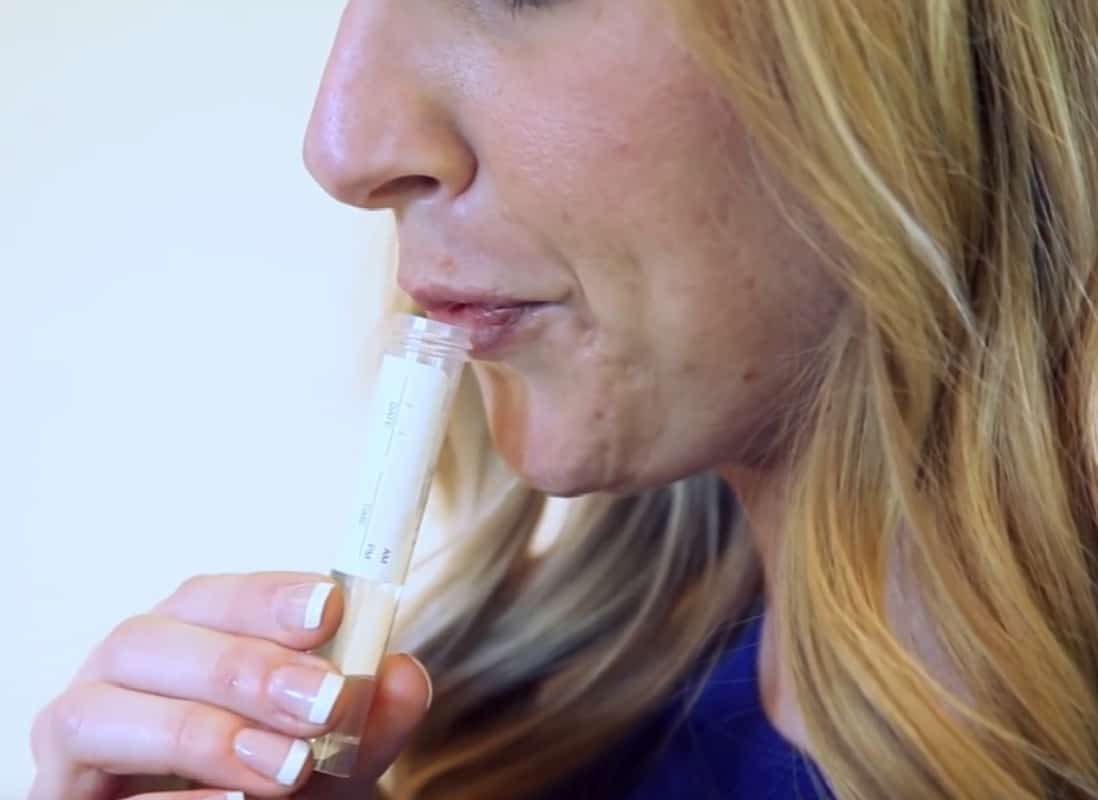
After securing the tube’s cap, you must shake the tube to mix in the buffer. It’s worth noting that the buffer is capable of preserving saliva for up to 6 months regardless of its exposure to harsh temperatures. Finally, you need to put the saliva-filled vile into the specimen bag, place it in the prepaid shipping box, and place it in the nearest post box. At last, you can expect to wait for 2 to 4 weeks for your results. Keep in mind that you have 12 months from the date of your purchase to return your completed saliva kit.
The Results

23andMe will send you a notification email to let you know when your results are ready. To access them, you’ll need to use the username and password you created during your earlier registration. Remember, results vary depending on the package you chose during your initial purchase. What’s more, the results are only available online.
Ancestry Service Results
The basic Ancestry Service provides you with five different reports. These include Ancestry Composition, Maternal Haplogroup, Paternal Haplogroup, Neanderthal Ancestry, and your DNA Family reports.
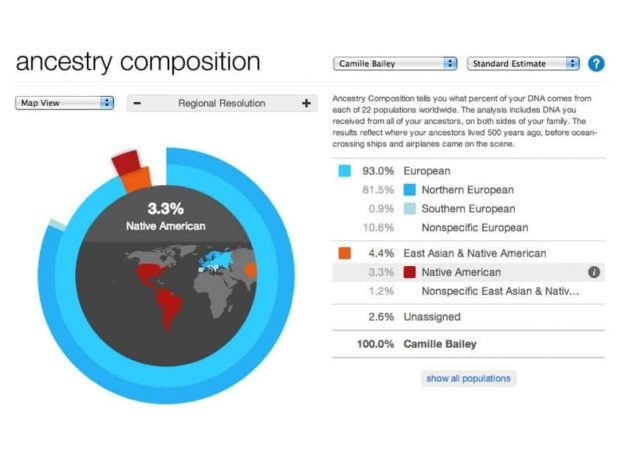
Ancestry Composition
The Ancestry Composition report demonstrates the regional origins of your DNA. To do so, 23andMe looks at the first 22 chromosomes of your autosomal DNA as well as your x chromosome (if you’re a male) or chromosome pair (if you’re a female).
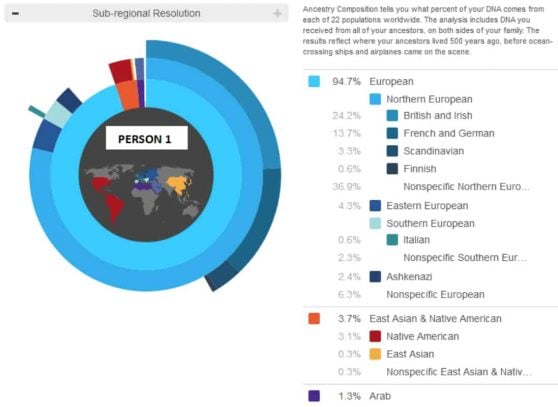
By doing so, they are able to determine your haplogroups. These are the sets of alleles (or genetic markers) that are associated with specific geographical regions.
The ancestry report shows you how your DNA is divided among 45 worldwide populations. The definition of these populations is derived from a pool of more than 10,000 people (11,091 to be exact) with that exact ancestry. The Ancestry Composition report tells you what percent of your DNA comes from each region. The results are rounded to the nearest 0.1 percent.
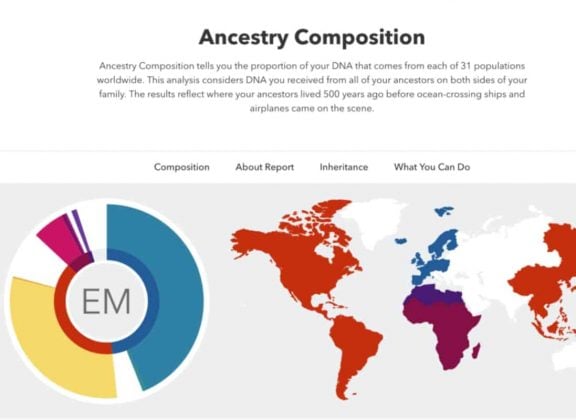
Typical Ancestry Composition reports are divided among different regions. For example, one might show that a person is 19.7 percent Iberian, 10.3 percent Ashkenazi Jewish, 2 percent West African, and so forth.
Most people’s ancestors come from a wide variety of places. The general mixing of once divided people is referred to as admixture. 23andMe uses algorithms to help identify common admixtures and better clarify your ancestors’ true place of origin. Still, the unpredictability of your ancestors’ migration makes it difficult for 23andMe to directly pinpoint where and when they lived somewhere.
Maternal Haplogroup
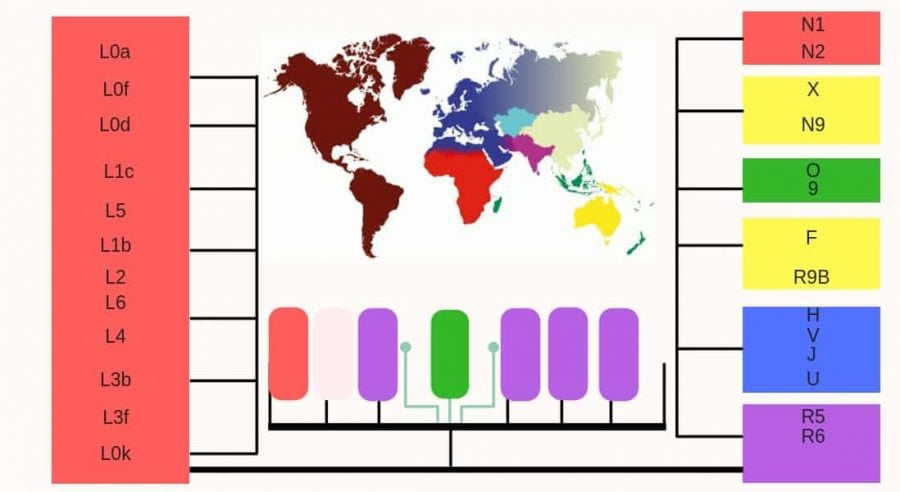
23andMe goes into more scientific genetic detail than any other test on the market.
23andMe tests your maternal haplogroups, helping you to establish the genetic markers in your mitochondrial DNA. This is the type of DNA you inherit directly from your mother. It’s unique in that it is found outside of the nucleus of your cells. As such, your mitochondrial DNA does not combine with any of your father’s DNA.
What’s even more fascinating about this type of DNA is that you share it with every person that shares a maternal line with you. What’s more, your mitochondrial DNA can be traced back to a single ancestor with a dominant genetic mutation. Most maternal haplogroups date back tens of thousands of years.
The Maternal Haplogroup report tells you what maternal haplogroup you belong to. It also tells you about the most probable origin and migrations of your maternal haplogroup. The report also lets you know the frequency of your maternal haplogroup.
Paternal Haplogroup

The Paternal Haplogroup report is only generated for male subjects. This is because the paternal haplogroup is made up of families of Y chromosomes, which are passed down from a father to his son(s). Females can learn more about their father’s haplogroup by accessing a report that belongs to their father or brother. 23andMe even features a tool called “Share and Compare” that helps female users update their paternal haplogroup.
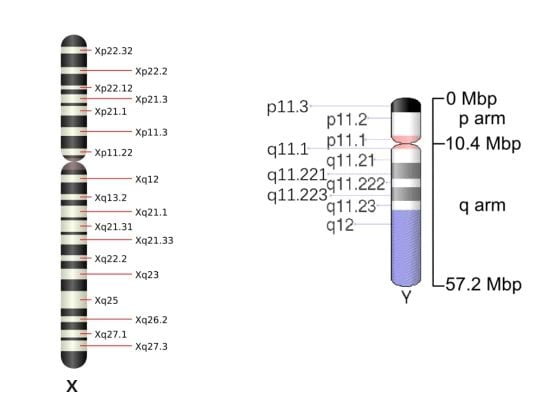
Similar to the maternal haplogroup report, the paternal haplogroup report traces the origins of your Y chromosome back to a specific genetic mutation in history. It also calculates the most probable origin and migrations of your paternal lineage.
Neanderthal Ancestry

23andMe’s Neanderthal Report shows you what percentage of your DNA contains genetic variations related to Neanderthals. They review 2,000 genetic variants across the Neanderthal genome. While Neanderthals went extinct around 40,000 years ago, they lived alongside more modern Home sapiens for tens of thousands of years. As such, these genomes still linger in many modern-day people.
DNA Family Reports
23andMe’s family reports tool are not as good as AncestryDNA’s.
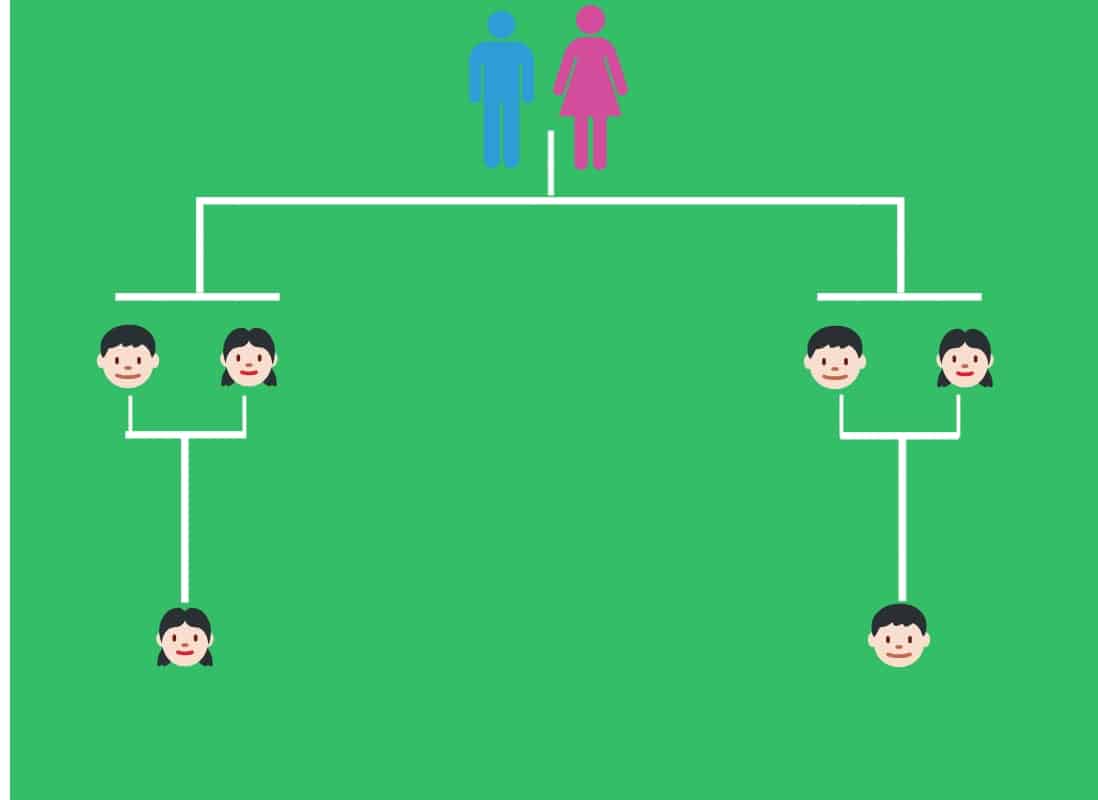
23andMe’s DNA Family report claims to offer a unique look into your family history. If you opt-in, you can even connect with and message people with similar DNA to you. You will also receive a report showing the places your DNA living relatives live. What’s more, you’ll gain access to information about your DNA traits as well as the traits belonging to your DNA relatives.

When you opt-in, you agree to show either your name or location to DNA relatives within the 23andMe database. You’ll also be able to see the percentage of and number of shared DNA segments between you and a relative. If you’re fortunate to have close family members who’ve also taken the test, this is a great place to start. However, you can also discover new relatives from near and far.
Health + Ancestry Service
There are several parts to 23andMe’s Health + add-on. It includes four unique reports, including a number of specific genetic health risk reports, a wellness report, a traits report, and a carrier status report.
Genetic Health Risk Reports
There are over five Genetic Health Risk reports that determine your genetic risk for developing certain diseases.
The BRC1/BRC2 test looks at your gene to determine whether you are at risk for developing certain cancers. These cancers include breast, ovarian, and more. The report tells you your hereditary risk level based on your genetic makeup. It also tells you whether or not you have functional tumor suppressor genes. What’s more, it lets you know about your BRC1 and BRC2 genes have pathogenic variants. These are the genetic mutations that increase a person’s susceptibility to diseases. While cancer-related gene variations don’t guarantee a person will develop cancer, they empower test subjects to take preventative measures.

Identifying genetic markers for health risks is probably what 23andMe is best known for.
Other genetic health risks represented on the 23andMe Genetic Health Risk report include age-related macular degeneration (which is adult-onset vision loss), alpha-1 antitrypsin deficiency, celiac disease, G6PD deficiency, hereditary hemochromatosis, hereditary thrombophilia, late-onset Alzheimer’s disease, and Parkinson’s disease. A typical report shows how many gene variants were detected. The report also tells you how the results are intended to be used and certain limitations that may apply.
While the health screening portion of the 23andTest costs more, knowledge of your predisposition to a disease is seemingly priceless.
23andMe Wellness Reports
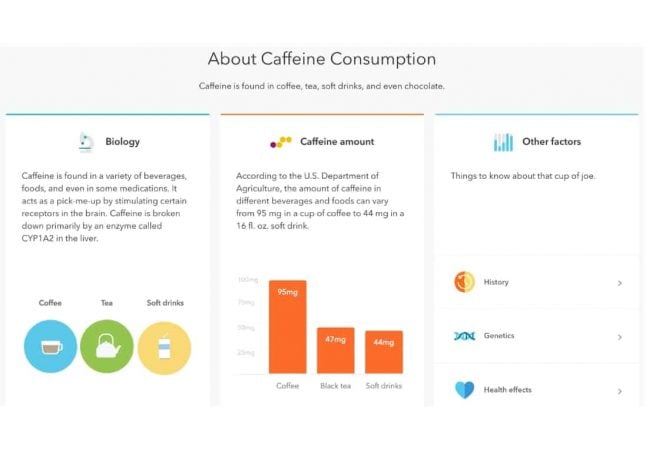
The 23andMe Wellness report gives you an interesting glimpse into how your genes influence your general health. For example, a wellness report may tell you that you are predisposed to weigh 17% more than the average person. It will reveal some fascinating genetic details pertaining to your caffeine consumption, lactose intolerance, sleep patterns, and more.
The report also supplies you with a list of healthy habits that are specifically beneficial to your genetics. While the report utilizes your DNA, age, and sex to make determinations, it does not account for any of your lifestyle or environmental factors. In conclusion, the details of this report should be taken with a grain of salt.
Traits
The Traits report tells you how your DNA effects over 25 of your traits. These include your genetic likelihood to have traits such as dimples, a cleft chin, and a photic (or sun-related) sneeze reflex. There are some fun yet bizarre traits in the mix too. This includes the detection of asparagus odor detection, cilantro taste aversion, and earwax type traits.
Know how your DNA effects over 25 of your traits through the Traits Reports
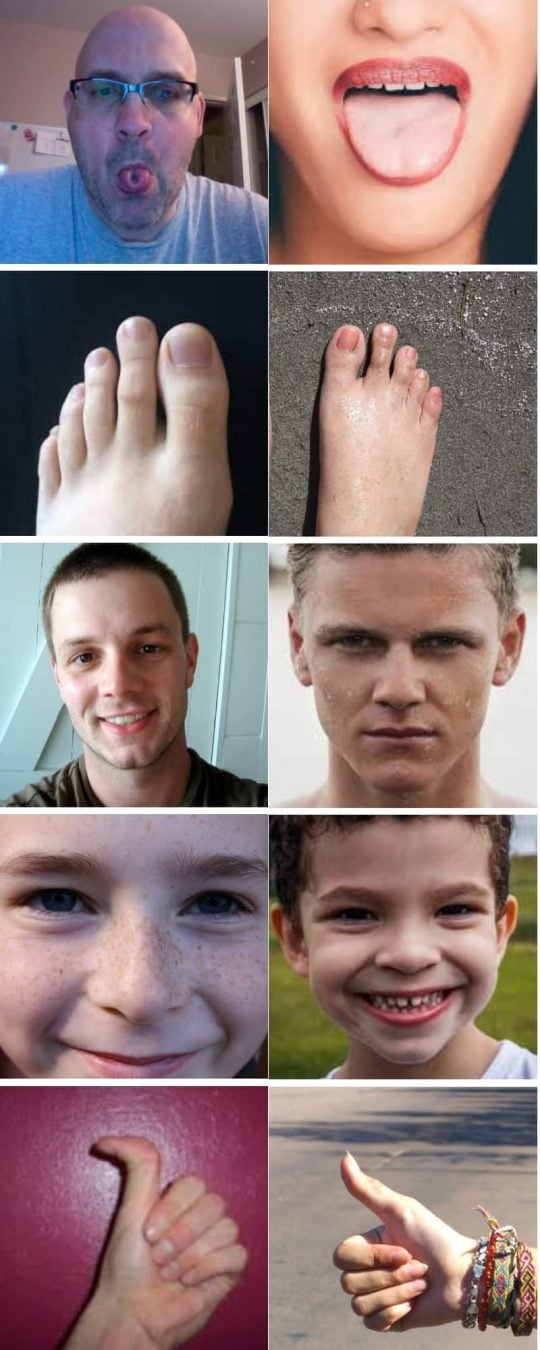
We found this section to be fun and entertaining. While not all traits are going to match you perfectly, it’s fascinating to learn more about how DNA defines us.
Carrier Status
23andMe’s Carrier Status report tell you whether or not you have any dominant or recessive gene related to a hereditary disease. These reports are particularly important if you are planning on having children. The report features over 40 different carrier reports. Some of the conditions it tests for include ARSACC, Cystic Fibrosis, and Sickle Cell Anemia.
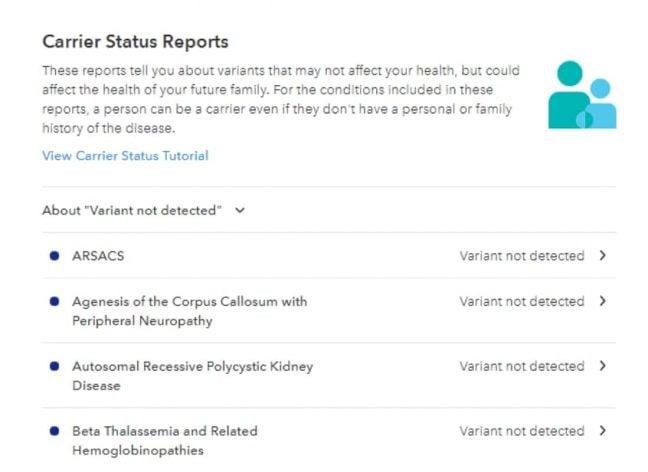
For example, your report may tell you how many Cystic Fibrosis-related gene variants they detected in your DNA. It will also tell you some of the signs and symptoms related to that disease and what a typical treatment consists of. At the bottom of the report, you have the options to “Connect with a GC,” print your report, or connect with a support group.
What’s the Price?

23andMe’s basic Ancestry Service is currently priced at $99. Although, they offer a steep discount ($49 per test) when you buy two or more kits at a time. Meanwhile, the Health + Ancestry Service currently costs $199. You do have the option to purchase the health screening report at a later date. However, you will end up paying around $25 more to do so. If you opt to buy more than one Health + Ancestry service, you also get 10 percent off each additional test.
You must pay an additional $9.95 for standard shipping. This includes the prepaid return shipping for your completed saliva specimen kit. This basic service is shipped through USPS’s First Class mail service and takes around three to six business days.
Expedited shipping is available for $14.95. This is shipped via USPS’s Priority Mail service and takes two to three business days. Finally, express shipping is available through FedEx’s Express Mail Service. This costs an additional fee of $24.95 and takes one to two business days.
Keep in mind that these costs are only for the first kit in your order. You must pay an additional $5.00 shipping and handling fee for each additional kit in your order.
What Does 23andMe Do with Your DNA Results?
During registration, customers are given the choice to consent to or withdraw from 23andMe’s research. It is worth noting that you can change your consent status at any time. However, you cannot withdraw from any previous studies you may have participated in. What’s more, there is typically a 30-day window of inclusion before a permanent change is made.
If you consent to share your DNA and self-reported information with 23andMe, there are a few things you need to know. First of all, 23andMe “de-identifies” you from your data. 23andMe uses this de-identified data for scientific research, much of which is used to enhance the 23andMe database. In addition, they may share your data with external research partners and/or scientific publications.
You may also get invitations to participate in research opportunities that are related to your “unreported DNA variants.” In other words, 23andMe may ask you to share genetic information that cannot be found in a 23andMe report. If you consent to participate in one of these studies, you may only be told what condition is being researched and not what genetic information is being shared.
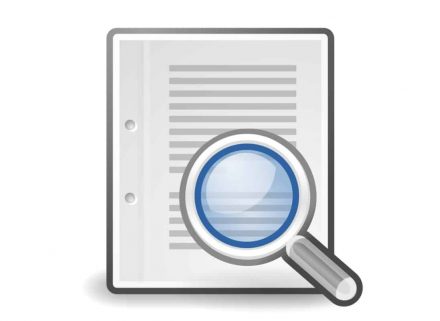
What About Privacy?
23andMe has taken sufficient precautions when it comes to protecting their customers’ privacy. Take, for example, shipping. Your completed saliva kit is shipped directly to the lab with nothing more than a barcode to identify the sender. Lab workers, postal workers, and anyone else who may intercept the package have no way of knowing the package contains your DNA.
What’s more, customers have full control of their privacy settings. For example, users can completely opt out of the DNA relatives feature or opt-in and tinker with their personal privacy settings. Those who choose to opt-in will be sharing their display name, profile sex, profile picture, DNA percentages, gene segments, common relatives, and haplogroups. For your display name, you can choose to share your full name (first and last), your initials, or a combination of the two.
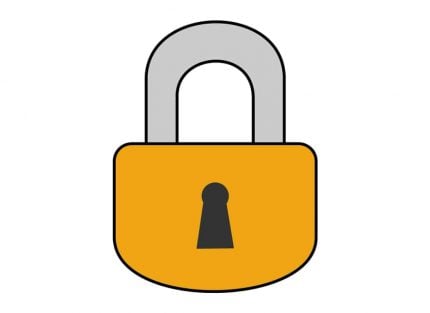
If you opt-out of open sharing, you cannot see the profiles of your DNA relatives. However, you can still request that an individual share their report with you. It is important to note that you can opt in and out of open sharing at any time. However, there is certainly a wealth of information ready to be uncovered in the DNA family feature. In fact, you can even pinpoint the distance of your relationship to a DNA relative and who your shared ancestor may be.
While DNA testing can not stand alone in family history research, it easy to see how 23andMe’s DNA family feature could help someone grow their family tree. For example, a new connection could help you discover a new relative, find a point of origin for your family, or discover something personal about a distant relative. 23andMe even has an integrated messaging feature that allows users to directly share personal information.
EXPERT QUOTE
“Most DNA testing companies take measures to keep your data private. I know that for 23andme, your account is obviously protected by a password but you also have to jump through different hoops to download your raw DNA data. I downloaded it at home and have it stored on an external drive that I have with me when I leave.”

DR. ISABELLE NADEAU
Ph.D and Genealogy Expert
Ease of Access

Only one-time upfront cost for unlimited access to your DNA Reports.
You need only pay the one-time upfront cost for a 23andMe Ancestry or Ancestry + Health service. After that, you have unlimited access to your reports. They also allow you to download your raw DNA data in a PDF file.
How Does 23andMe Compare to Other Direct-to-consumer DNA Tests?
Now that you’ve learned a bit about 23andMe’s services, you’re probably wondering how it fares against other DNA tests.

MyHeritage is a popular DNA testing service that is often compared to 23andMe. At $79, it’s priced slightly lower than 23andMe’s standard Ancestry service. It features an online family tree program as well as an online community. With that being said, MyHeritage only offers autosomal DNA testing, which pales in comparison to 23andMe’s trio of DNA tests.
Family Tree DNA is yet another prevalent direct-to-consumer DNA testing service. Basic (autosomal) Family Ancestry test will run you $79. Reports are similar to that of 23andMe, with details about your ancestors’ origins dating as far back as 500 years. Their maternal DNA service costs $199, and their paternal DNA service costs $169. As such, 23andMe is the clear winner in this roundup.
AncestryDNA is yet another forerunner in the DNA testing industry. Their standard DNA test will run you $99. Although, they offer frequent discounts. It is important to note that AncestryDNA only offers autosomal DNA tests at this time. Nevertheless, they boast a large online genealogy community.
Our Conclusion
It’s clear that 23andMe offers one of the most affordable DNA tests on the market. It is also one of the most comprehensive, considering it analyzes your autosomal, mtDNA, and YDNA (if you’re a male). If you’re in it purely for family tree research, some of the other genealogical communities (especially AncestryDNA) may entice you. Still, 23andMe’s Health + Ancestry service offers individuals a rare glimpse into their potential health problems. What’s more, you do not need to pay a subscription fee to utilize 23andMe’s full database.
Addressing the Controversies
A major concern about direct-to-consumer DNA testing is its accuracy. 23andMe uses a mix of internal and external databases to generate its ancestry reports. As more DNA data is reported, the accuracy of the results will increase. Nevertheless, there are a number of factors that could incorrectly skew the results. For one, human error is always a possibility. A person may fail to submit an accurate saliva sample, or a mix-up may occur at the lab.
There are also some potential quality-control issues when it comes to reference populations. Consider the fact that 23andMe’s Ancestry report shows how your DNA breaks out amongst 45 populations. Unfortunately, the datasets for these populations are not even. For example, there are far more detailed datasets for European populations than there are for the entire continent of Asia. The company claims they are working to enhance the datasets for underrepresented populations. In the past, they have initiated research projects that are aimed at evolving underdeveloped datasets. One example of this is the African Genetics Project.
Final Thoughts
Still wondering if 23andMe is right for you?
Sure it’s one of the more expensive DNA testing kits, but it is also one of the most comprehensive tests on the market. Not only that, but the additional health screening feature offers a rare and beneficial glimpse into genetic conditions that could affect you later in life.
Beyond that, 23andMe has an attractive and easy-to-navigate interface. You can even connect and talk with relatives near and far. While we’d like to see the addition of a family tree feature, we’re confident in 23andMe’s current services and wouldn’t hesitate to recommend them.
